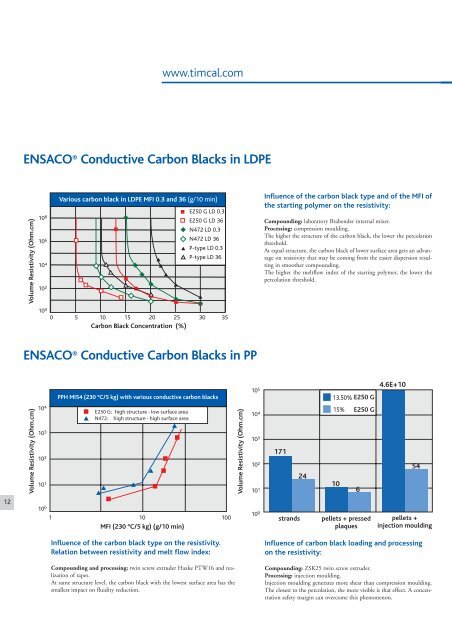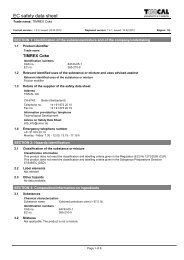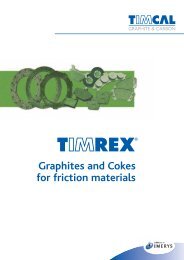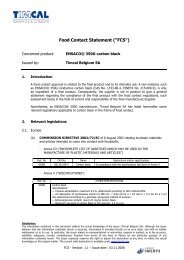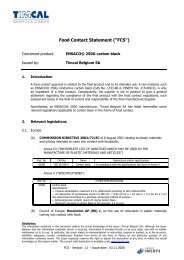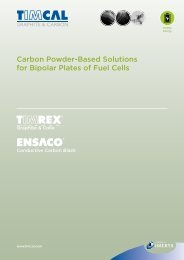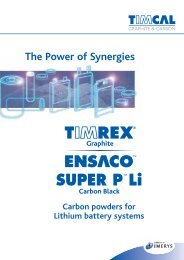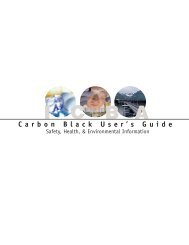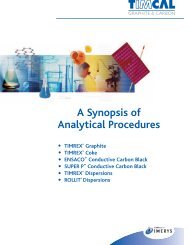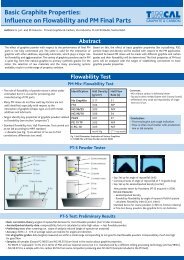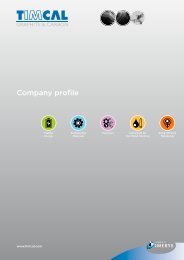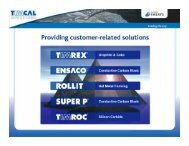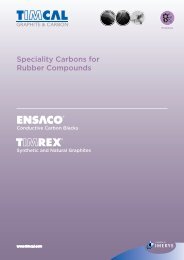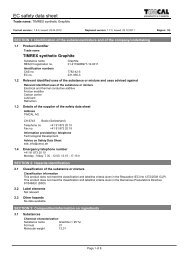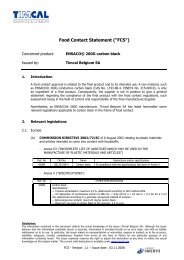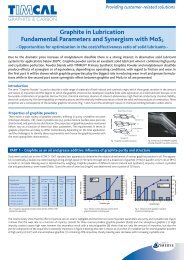ENSACO® Conductive Carbon Black for polymer ... - Timcal Graphite
ENSACO® Conductive Carbon Black for polymer ... - Timcal Graphite
ENSACO® Conductive Carbon Black for polymer ... - Timcal Graphite
You also want an ePaper? Increase the reach of your titles
YUMPU automatically turns print PDFs into web optimized ePapers that Google loves.
12<br />
www.timcal.com<br />
ENSACO ® <strong>Conductive</strong> <strong>Carbon</strong> <strong>Black</strong>s in LDPE<br />
Volume Resistivity (Ohm.cm)<br />
Volume Resistivity (Ohm.cm)<br />
10 8<br />
10 6<br />
10 4<br />
10 2<br />
10 0<br />
10 4<br />
10 3<br />
10 2<br />
10 1<br />
10 0<br />
Various carbon black in LDPE MFI 0.3 and 36 (g/10 min)<br />
E250 G LD 0.3<br />
E250 G LD 36<br />
N472 LD 0.3<br />
N472 LD 36<br />
P-type LD 0.3<br />
P-type LD 36<br />
0 5 10 15 20 25 30 35<br />
<strong>Carbon</strong> <strong>Black</strong> Concentration (%)<br />
ENSACO ® <strong>Conductive</strong> <strong>Carbon</strong> <strong>Black</strong>s in PP<br />
PPH MI54 (230 °C/5 kg) with various conductive carbon blacks<br />
E250 G: high structure - low surface area<br />
N472: high structure - high surface area<br />
1 10<br />
MFI (230 °C/5 kg) (g/10 min)<br />
100<br />
Influence of the carbon black type on the resistivity.<br />
Relation between resistivity and melt flow index:<br />
Compounding and processing: twin screw extruder Haake PTW16 and realization<br />
of tapes.<br />
At same structure level, the carbon black with the lowest surface area has the<br />
smallest impact on fluidity reduction.<br />
Volume Resistivity (Ohm.cm)<br />
10 5<br />
10 4<br />
10 3<br />
10 2<br />
10 1<br />
10 0<br />
Influence of the carbon black type and of the MFI of<br />
the starting <strong>polymer</strong> on the resistivity:<br />
Compounding: laboratory Brabender internal mixer.<br />
Processing: compression moulding.<br />
The higher the structure of the carbon black, the lower the percolation<br />
threshold.<br />
At equal structure, the carbon black of lower surface area gets an advantage<br />
on resistivity that may be coming from the easier dispersion resulting<br />
in smoother compounding.<br />
The higher the meltflow index of the starting <strong>polymer</strong>, the lower the<br />
percolation threshold.<br />
171<br />
24<br />
13.50% E250 G<br />
15% E250 G<br />
10<br />
strands pellets + pressed<br />
plaques<br />
6<br />
4.6E+10<br />
54<br />
pellets +<br />
injection moulding<br />
Influence of carbon black loading and processing<br />
on the resistivity:<br />
Compounding: ZSK25 twin screw extruder.<br />
Processing: injection moulding.<br />
Injection moulding generates more shear than compression moulding.<br />
The closest to the percolation, the more visible is that effect. A concentration<br />
safety margin can overcome this phenomenon.


